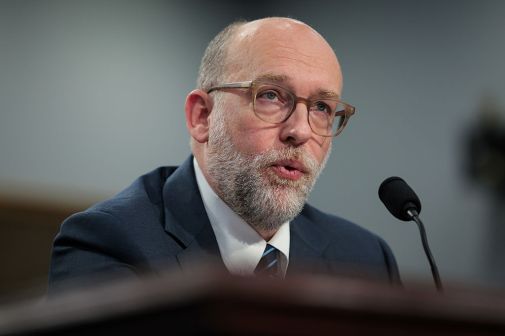HHS Innovation Day tries to ‘hack red tape’

An office in the Health and Human Services Department told a team of the department’s innovators that its current model for website design is “launch, leave and hope.”
Usability testing is difficult, the HHS team learned, because collecting information from the public has to be approved to comply with the Paperwork Reduction Act if 10 or more people are asked standardized questions.
This is just one of many problems employees tried to tackle Thursday at the department’s HHS Innovation Day, an event packed with discussions on cutting through bureaucracy to solve tech, science and workforce-related problems. The day also included team presentations from HHS’ startup-style program, called Ignite Accelerator.
“Innovation is a force for good in this department and all across the federal government,” said Susannah Fox, HHS chief technology officer, in a speech to kick off the morning.
After her opening remarks and a Q&A, another panelist held audience members an information session on design thinking. Post-it notes were placed around the room for participants to jot down ideas on how to promote design thinking within their workplaces.
Then, Ignite Accelerator teams competed for a chance to present as a finalist in the afternoon. The group assessing consumer usability was one of nine finalists.
Their project would aim to get around the Paperwork Reduction Act approval rule by providing a toolkit on how to use only nine people to improve web design, called “Talk to 9.”
“We are missing the mark because we are not talking to our audience before we create resources that are aimed for them,” said presenter Margeaux Akazawa, presidential management fellow of the Office of the National Coordinator of Health IT at HHS.
Another project touched on a much-discussed issue this summer: improving Freedom of Information Act processes.
[Read more: Better tech, stronger disclosure policies could improve FOIA — experts]
The Centers for Medicaid and Medicare Services receives the most information requests per year of any entity in HHS — often on Healthcare.gov operations, the Affordable Care Act and the Medicare and Medicaid programs. But the process for submitting and tracking requests is fraught with inefficiencies, team presenters said.
CMS’ preferred method for requests is still paper, and citizens submitting information or correspondence requests have to sort through at least eight entry points to find the right one, the team wrote in their executive summary.
But the Ignite Accelerator team is trying to change that — by moving to FOIA Online.
In June, the Obama administration announced the government would launch in 2017 “a consolidated FOIA request portal,” which would be inspired by the service FOIA Online provides.
“What our goal is, is to bring a fresh new approach moving towards the 21st century,” Janis Nero of the Office of Strategic Operations and Regulatory Affairs at CMS, in her presentation. “We really want to modernize our process, which will increase customer service and customer satisfaction, and of course decrease wait time and decrease litigations, we hope, in the future.”






